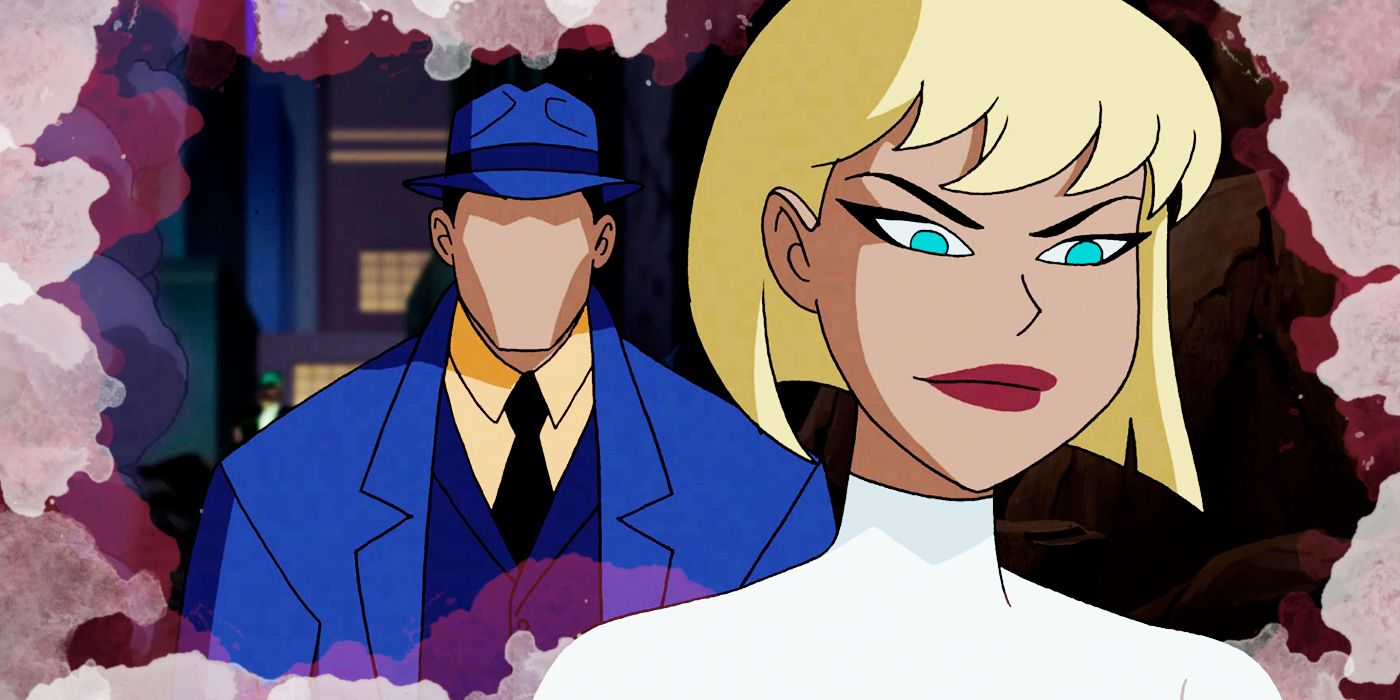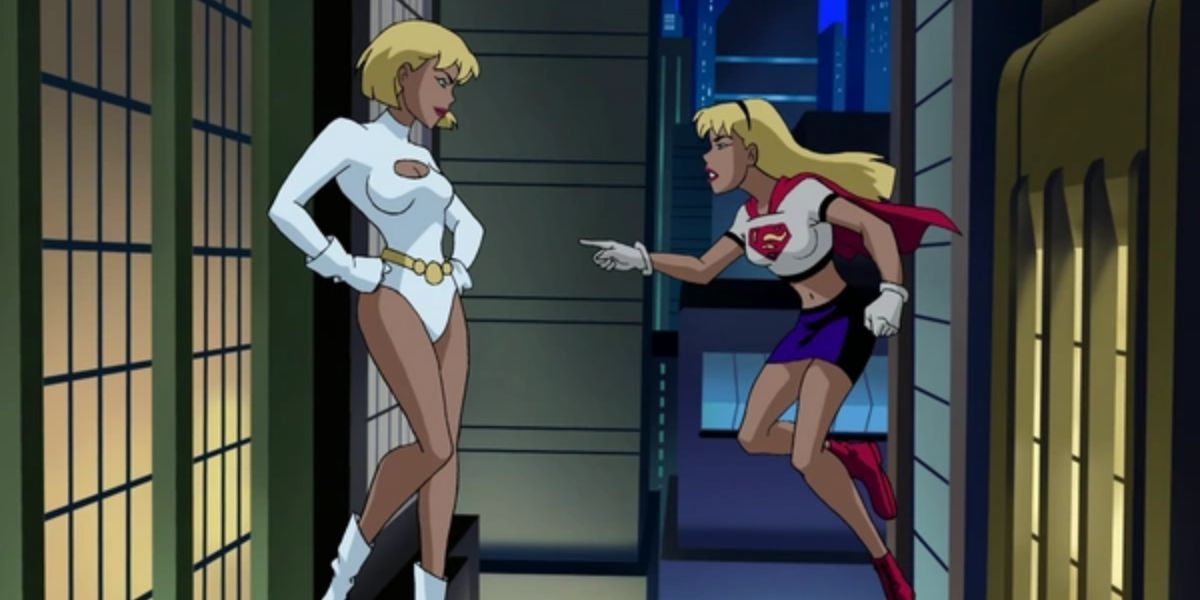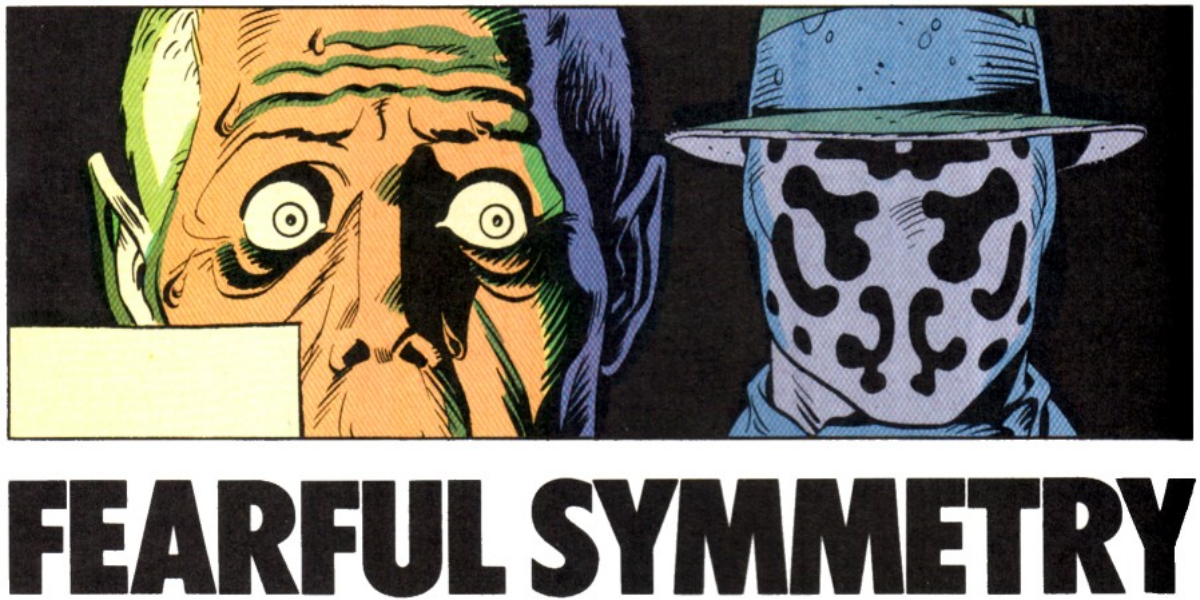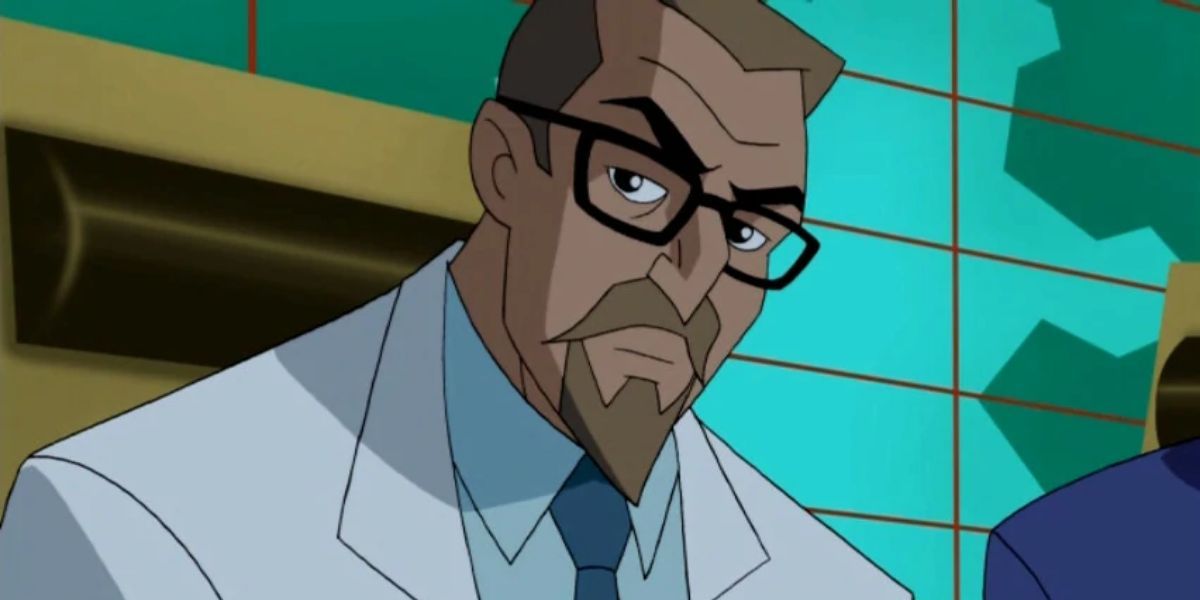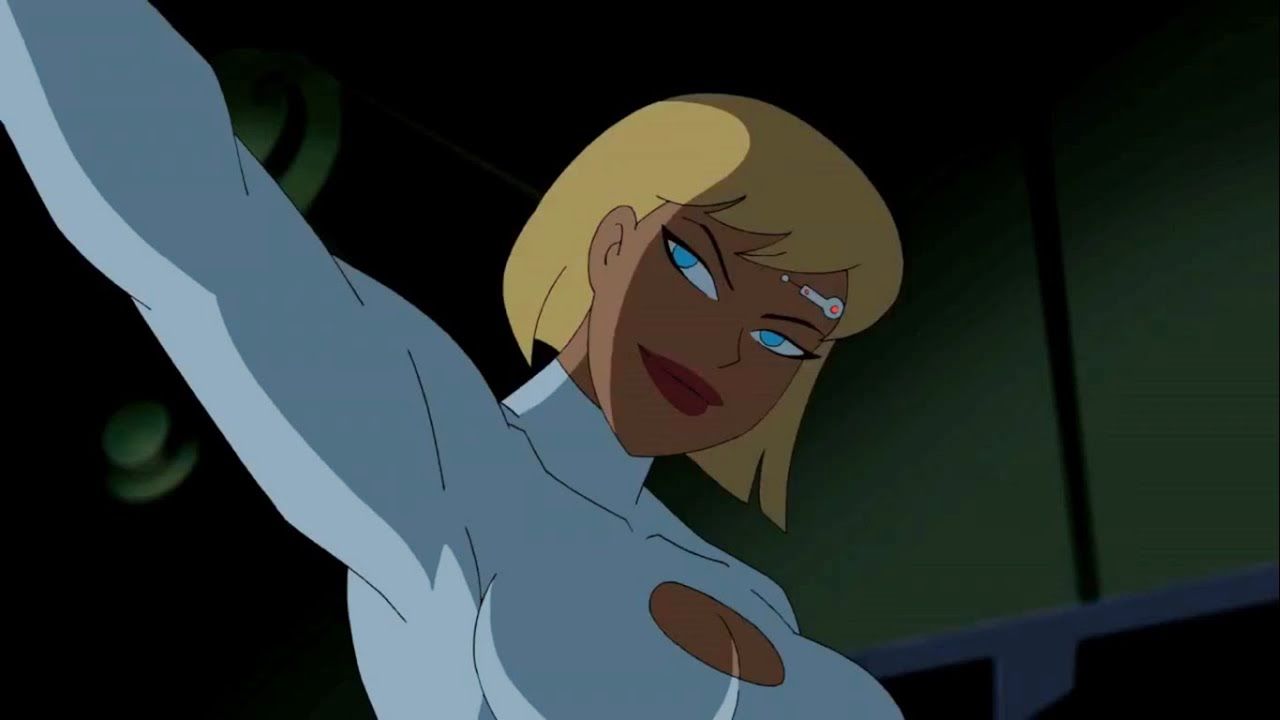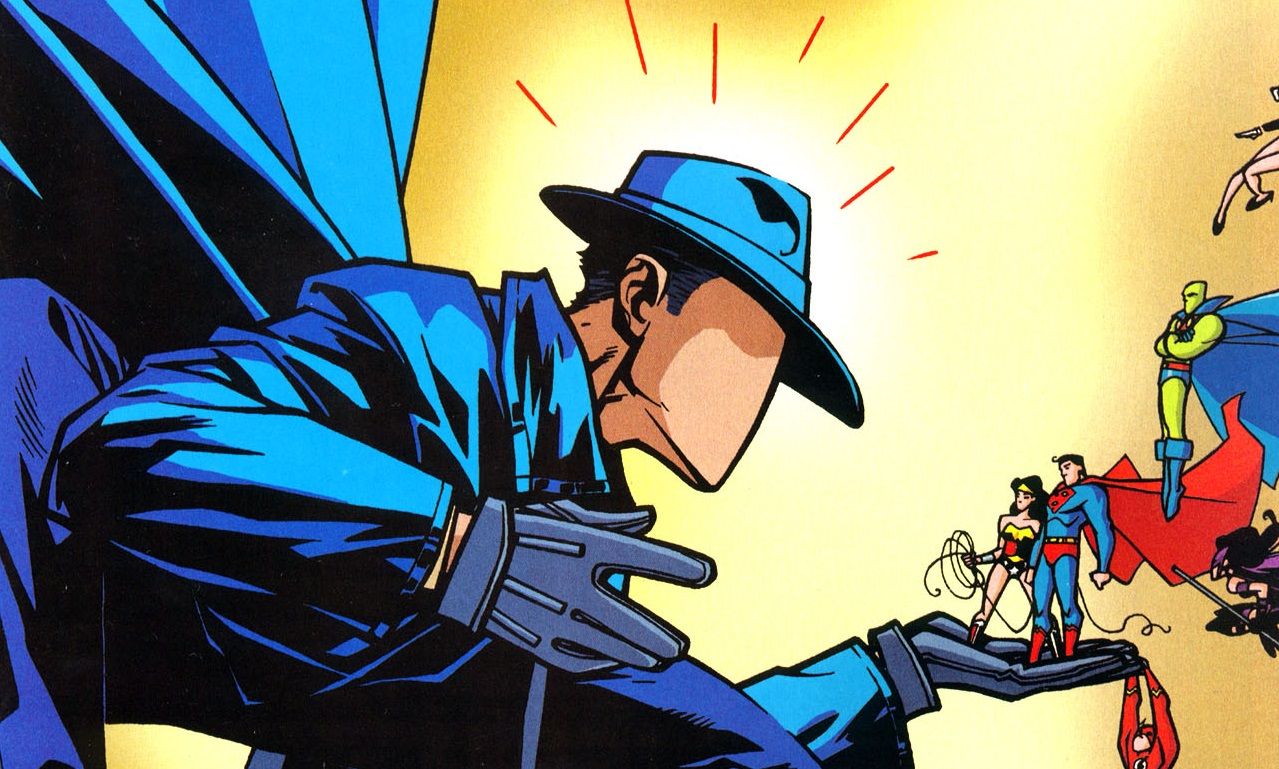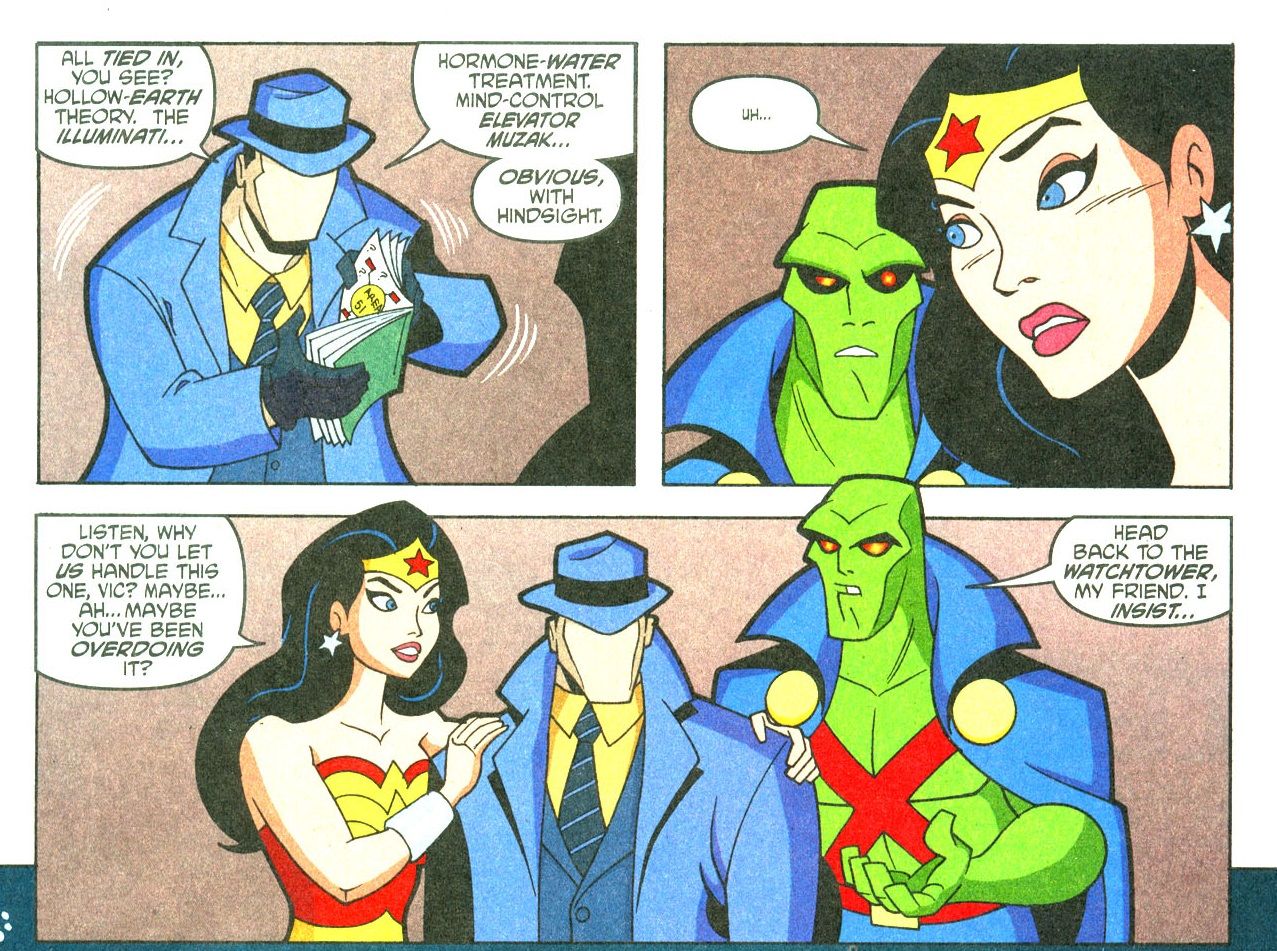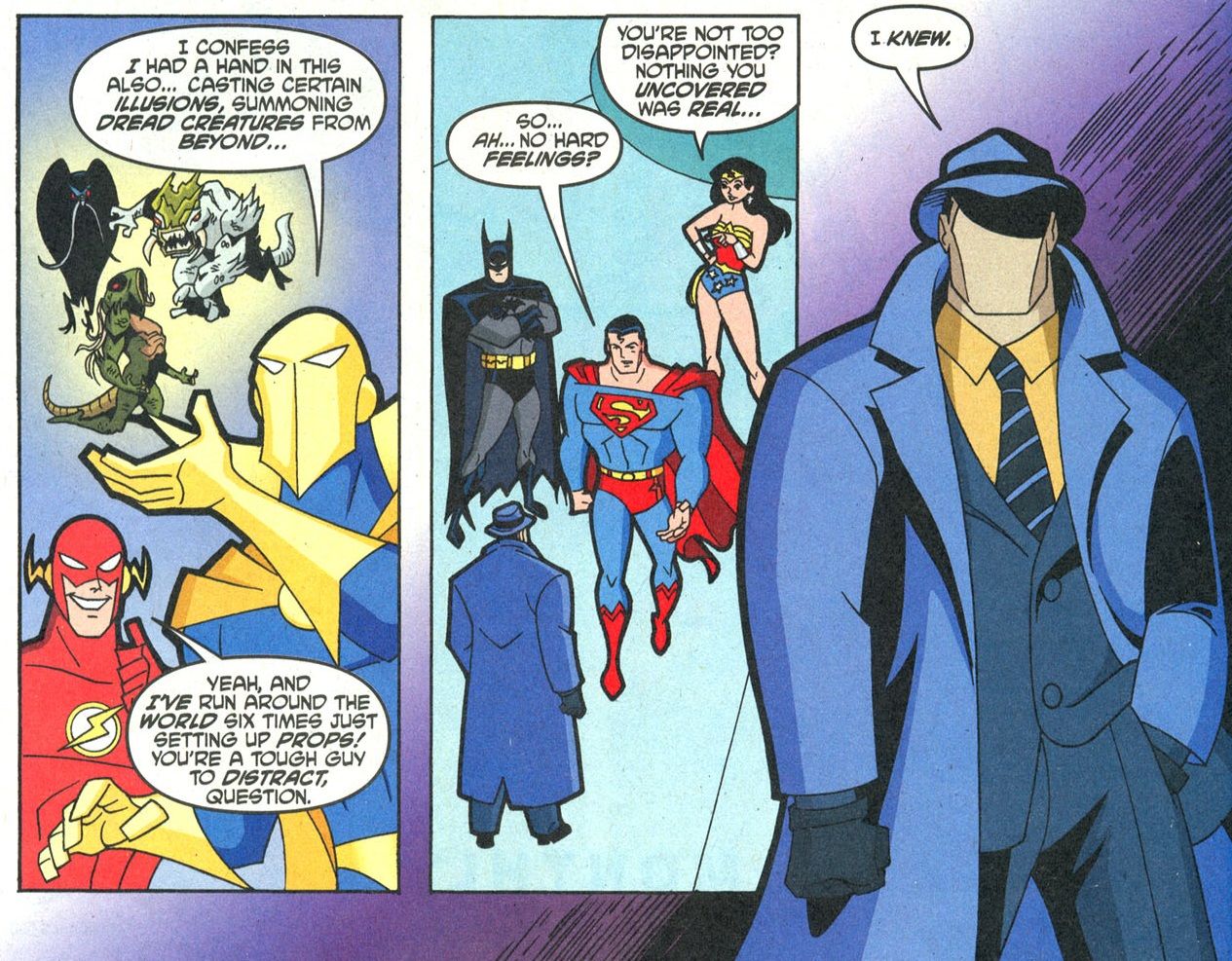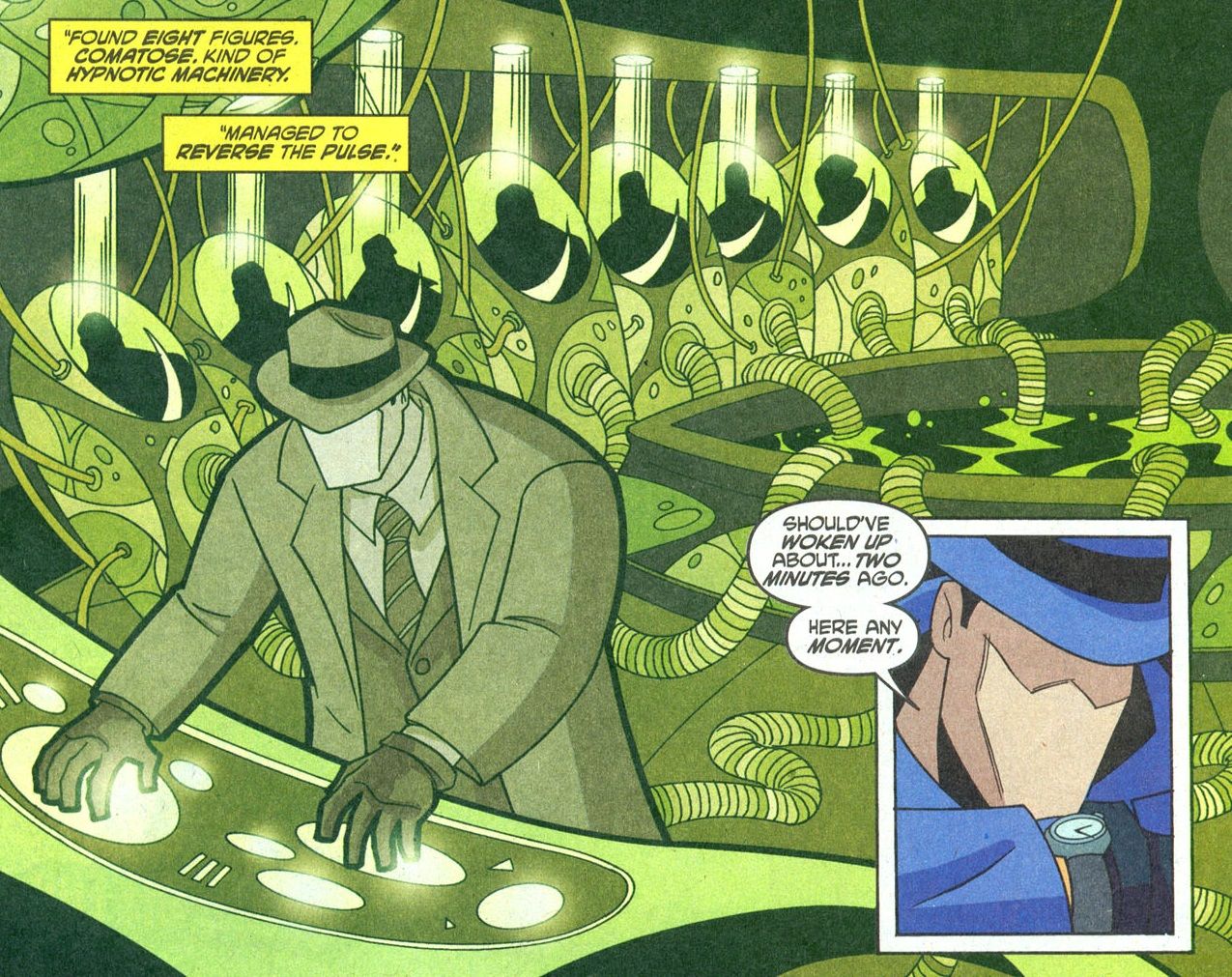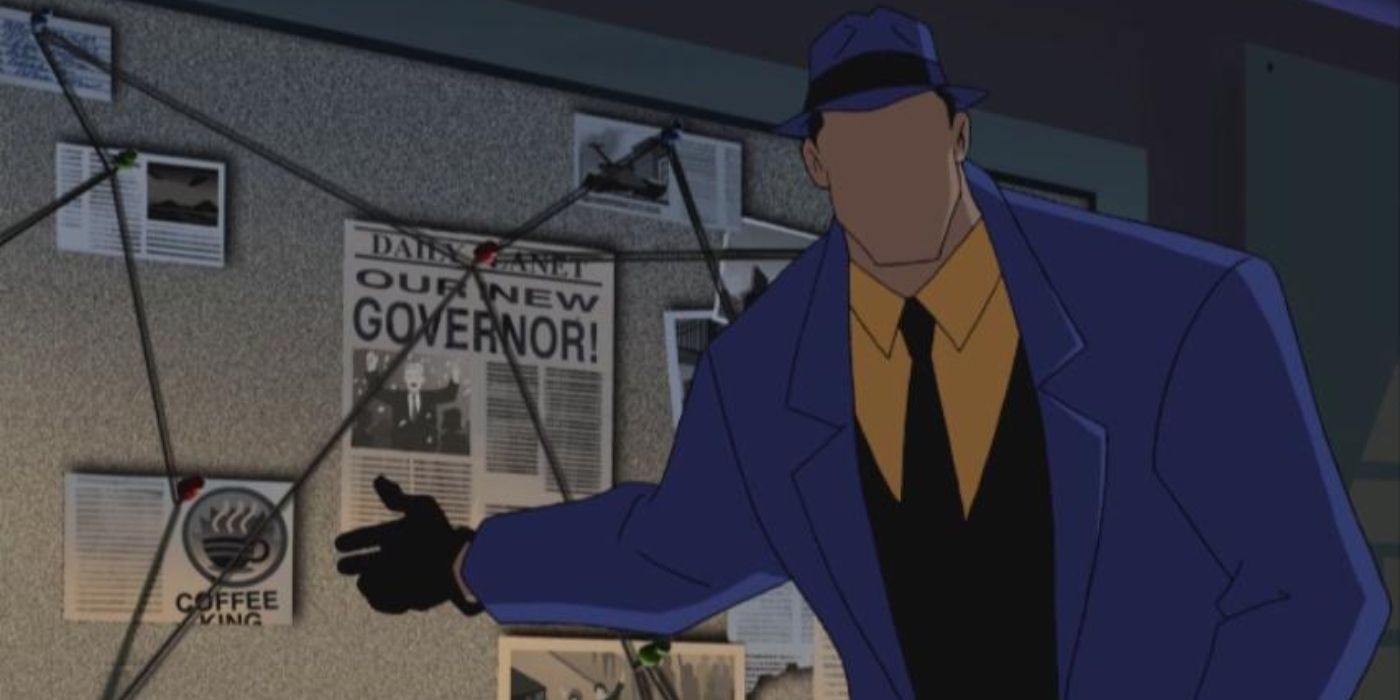Welcome to Adventure(s) Time's 155th installment, a look at animated heroes of the past. And if you have any suggestions for the future, let me hear them. Just contact me on Twitter. This week, the launch of Justice League Unlimited's epic "Cadmus" conspiracy arc and an issue of its tie-in comic that also had fun with the Question, a hero who might have a tin-foil hat hiding beneath his fedora.
Debuting on September 4, 2004, "Fearful Symmetry" comes from writers Stan Berkowitz and Robert Goodman, with direction from DC Animated Universe mainstay Dan Riba. Its title carries a few allusions, some blatant and others more obscure.
Evil Twins
The obvious reference is to William Blake's 1794 poem "The Tyger," which questions God's intentions behind creating both darkness and light. "What immortal hand or eye, / Could frame thy fearful symmetry?" is the question asked by Blake to a ferocious beast. Later stanzas question the tools used in the tiger's creation and how his creator reacted to this beast.
In "Fearful Symmetry," the kindhearted Supergirl discovers she's been cloned, as a conspiracy with ties to big business and big government is using her "twin" Galatea to commit murder. Not only do we have Supergirl and Galatea standing in for the existence of good and evil, but the story itself hinges on the questionable means of creating "the Tyger" -- in this case, genetic engineering in the place of nature. A previous episode of Batman: The Animated Series entitled "Tyger, Tyger" also used the poem to evoke images of man playing God.
Anyone familiar with Alan Moore and Dave Gibbons' pioneering miniseries Watchmen is also familiar with this reference. Watchmen #5, titled "Fearful Symmetry," focuses on Rorschach, the unhinged vigilante inspired by Steve Ditko's creation, the Question. The entirety of that issue's panel layout is subtly designed to be symmetrical, culminating in a center spread where the pages directly reflect one another.
The premise behind Justice League Unlimited was to cram every available DC superhero into the series, as co-creator Bruce Timm now felt quite confident handling various superheroes and having fun with them while he could. (The DCAU was over a decade old at this point.) Four episodes into Unlimited, the Question is introduced as a Leaguer, interrupting a conversation between Supergirl and Green Arrow. And, as is evident to any Watchmen reader, the show's interpretation of Question owes just as much to his deranged cousin Rorschach as Ditko's original comics.
Unwelcome Returns
While previous DCAU shows stuck to a "continuity lite" approach, rarely referencing previous episodes, the story arc introduced in "Fearful Symmetry" hinges on a familiarity with the canon. Crucial to this episode is the Superman: The Animated Series two-parter "Legacy," which has Superman brainwashed by Darkseid and used as a weapon against the Earth. While fighting her cousin, Supergirl is injured and soon treated at S.T.A.R. Labs, which was always portrayed on Superman as a blandly inoffensive place of benevolent scientific research.
In "Fearful Symmetry," Question postulates that Supergirl's bad dreams (which are, in fact, a psychic connection to Galatea) might have some link to S.T.A.R. Labs, as she has a gap in her memory during her time there. The heroes travel to S.T.A.R. to investigate and encounter Superman supporting player Professor Hamilton, who assures them in his innately anodyne manner that she never once left his lab during treatment. He proposes that what Supergirl's actually "remembering" is a surgical robot that operated on her, and her dreams are a defense mechanism reacting against the trauma of her surgeries.
This would seem to be a reasonable explanation (not that the Question buys it) until the team's ambushed after leaving S.T.A.R. Labs by a robot. The conspiracy deepens as the heroes realize it's a Z-8 model, which happens to be the model the League purchases from the military for training purposes. (And a nod to another show connected to DCAU continuity, The Zeta Project.) As the Question reveals, the officer in charge of the Z-8 project is General Hardcastle, who commanded the military response to Superman's attack in "Legacy."
Green Arrow, Question, and Supergirl confront the general in his country home, discovering he still lives in fear of another Kryptonian attack. Hardcastle, far from the confident warrior we once knew, confirms many of the Question's theories but can only answer so many questions. After the heroes leave, Galatea enters Hardcastle's home and murders him as punishment for speaking against her superiors.
But Don't Call Her Power Girl
Years earlier, Superman: The Animated Series producers had plans to address the public's reaction to Superman's brainwashed heel-turn, but the series ended sooner than expected. Aside from an oblique reference to Superman working to rebuild the public's trust in Justice League's first episode, the issue had been treated as settled. With "Fearful Symmetry," we discover that very real repercussions of Superman's actions still await him and his allies.
In preparation for future metahuman attacks, the deep state has created Project Cadmus, a secret division devoted to researching and developing super-powered deterrents. We're told that previous shadowy government agencies seen on Superman and Justice League (which brought us the villains Volcana and Royal Flush Gang, respectively) have ties to Cadmus, but these pale in comparison to Galatea.
Created with DNA stolen from Supergirl by S.T.A.R. Labs, Galatea is a slightly older, more powerful version of the heroine. The heroes eventually confront Galatea inside a genetics firm called Nuvo-Gen, where the Question reveals that the psychic connection must go both ways -- Galatea is also now experiencing sleepless nights, a reflection of Supergirl's conscience.
Before any more answers can be revealed, a mysterious voice on a phone orders Nuvo-Gen to be firebombed. Supergirl soon calls her friend Professor Hamilton to report Galatea couldn't be found, unaware that in his lab, Hamilton's treating Galatea's body, surrounded by military officers.
Just as fans are meant to catch the reference to Rorschach, it's clear Galatea is an homage to Power Girl, a comics hero with a tangled web of continuity that was once (in simpler times) the Earth-2 equivalent of Supergirl. Making her a clone of Supergirl eliminates all the complicated retcons and enables the creators to introduce her in a far more dramatic fashion. Comics fans get the joke, but anyone unfamiliar with the lore can enjoy the story on its own merits. If this were her only appearance, it would already stand as an impressive episode, but the Cadmus story arc will continue to evolve into something truly remarkable.
Obvious, With Hindsight
"Fearful Symmetry" introduces the Question as a conspiracy nut, investigating the links between global warming, fluoride, and boy bands while his teammates look on bewildered. The twist, though, is that he's quite sharp, and his instincts turn out to be sound. A similar idea is explored in the show's tie-in comic, Justice League Unlimited #36's "Wild Geese" from writer Simon Spurrier, Min S. Ku, Mike Sellers, Jeff Albrecht, Zach Howard and Heroic Age.
The story opens with the Question uncovering a Durlan shapeshifting alien that disguised himself as a US Senator. The League congratulates Question on his discovery but dismisses him from the case, as they're uneasy with all of his conspiracy talk.
The Question ignores his orders, investigating the Senator's files and soon finding himself in contact with classic urban legends, such as Chupacabra, Yeti hybrids, the Loch Ness Monster, and the Mothman. When the founding Leaguers hold a meeting to announce they've located the last of the Durlan, Question crashes the assembly. Before he can speak up, the founders confess they'd sent Question on a wild goose chase to keep him busy.
He explains their "subterfuge was sloppy. Unprofessional." He found DNA evidence on each location indicating the hoaxes. Flash remarks on the absurdity of Question keeping his friends' DNA on file, a quip that echoes Question's iconic "Please... I go through everyone's trash." line from "Fearful Symmetry."
But now there's a twist on the twist, as the Question then blasts Superman with his anti-Durlan weapon. He reveals that the founders are actually Durlan in disguise, and he's arranged for the real heroes to arrive any second now. They dutifully appear to battle the exposed Durlan as Question walks away, remarking again that this was all "obvious, with hindsight."
"Just Because I'm Paranoid, Doesn't Mean I'm Stupid."
The debut of a DCAU Power Girl obviously has some appeal to diehard fans, but is there any question that, well, the Question steals this episode? Re-Animator star Jeffery Combs' performance alternates between creepy, glib, and charming, all while maintaining that unflappable air of someone one step ahead of everyone else in the room. Re-imagining the Question as Rorschach isn't exactly a stroke of genius, but treating him as someone truly clever and insightful while also coming across as a little disturbed strikes the right balance. Portraying him as a raving loon, existing purely as the butt of the joke, would've done the character a disservice. The writers also deserve credit for giving Question so many great lines and even the whimsy to hum a pop ditty that he suspects is part of a global elitist conspiracy.
There's no pretense Spurrier isn't writing Rorschach in his Unlimited issue, giving the Question that vigilante's rhythmic, simplified speech pattern from Watchmen, and swapping out his "hrrm" s for "huhm" s. The show came close to Rorschach -- and was aided enormously by Combs' cool, flat delivery -- but still allowed Question to speak in full sentences. Not that this detracts from an amusing issue, one that utilizes the character in such an entertaining way and perfectly uses the series' "done in one" format, but the show was closer to 85% Rorschach than 100%. "Wild Geese" is one of the better Unlimited issues, coming towards the end of the tie-in days and standing out amongst some of the more obvious filler material. The issue's worth finding for any fan of Question's animated appearances.

